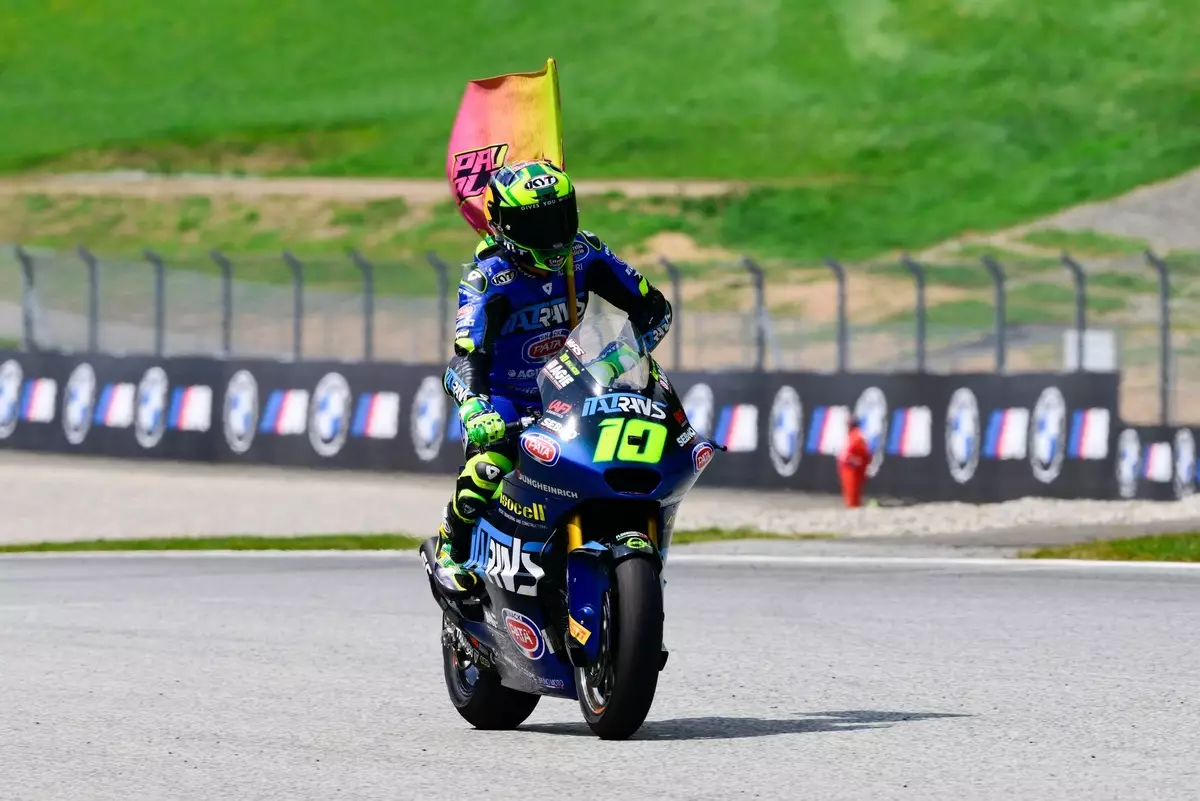The impending ascension of Diogo Moreira to the pinnacle of motorcycle racing represents more than just a career milestone for a 21-year-old prodigy—it signals a potential paradigm shift within MotoGP. Moreira’s move from the intense battles in Moto2 with Italtrans into the top-flight category reflects a trend where raw talent begins to overshadow traditional nationality barriers. Historically, South American representation in MotoGP has been sparse, making this transition not only significant for Moreira but also symbolic of the evolving global landscape of the sport.
What particularly stands out is his rapid rise fueled by undeniable performance, such as his commanding victory at the Austrian Grand Prix. Many may attribute his promotion solely to market considerations, especially given the anticipated return of Brazil to the MotoGP scene after nearly two decades. However, dismissing his merit would do a disservice to his skill level. Moreira’s candidness about his motivations—highlighting performance over nationality—suggests a competitor driven by passion and perseverance, rather than mere regional representation.
This shift prompts a reflection on how MotoGP teams are increasingly valuing talent that transcends traditional regional alignments. Moreira’s signing indicates a future where a rider’s ability can supersede nationality, potentially diversifying the athlete pool and invigorating the sport with new narratives and fanbases.
Strategic Moves and Market Reconfigurations
Honda’s decisive push to secure Moreira signals a calculated effort to develop a future star aligned with its long-term vision. By offering a multi-year contract centered around the 2026 season, Honda is planting seeds for the next generation of competitive machinery in the evolving 850cc era. This strategy underscores a nuanced understanding that driver development must coincide with upcoming technical regulations to establish dominance.
The timing also aligns with a broader market and promotional agenda. With a Brazilian rider onboard, Honda bolsters its appeal in South America, a continent with a rich racing heritage but doldrums of recent representation. The return of Brazil to MotoGP significance, especially in light of the impending 2026 calendar expansion, is an astute move—both sporting and commercial. It aims to cultivate a regional fanbase, expand sponsorship opportunities, and rejuvenate a market that has been underserved since Alex Barros’ last race in 2007.
Yet, this isn’t merely a story of national pride. Moreira’s emphasis on his performance as the primary factor in this transition exemplifies a merit-based ethos that could reshape team strategies across the paddock. For Honda, nurturing a young talent like Moreira could pay dividends not only on the track but also in branding and youth engagement, vital components for the sport’s modernization and growth.
The Ripple Effects: Competition, Sponsorships, and Contract Dynamics
The ripple effects of this transfer extend beyond Moreira’s personal trajectory. Jack Miller’s potential continuation with Pramac Yamaha indicates that the larger rider market is stabilizing around existing talents, possibly leaving less room for emerging competitors like Miguel Oliveira. The shifting landscape affects contractual negotiations, with performance clauses and injury histories playing increasingly decisive roles.
For Oliveira, the move signals looming pressure; contract vulnerabilities tend to surface when consistency falters due to setbacks such as injuries. Meanwhile, Miller’s probable extension might exemplify a strategic choice to maintain stability in a period of burgeoning change. His experience and current contract status make him a pivotal figure in this evolving ecosystem.
Furthermore, Honda’s attractive proposal to Moreira and the strategic timing reflect an understanding that the sport’s future hinges on cultivating young riders who can adapt to rapid technical changes and global market demands. This approach signals a broader trend: MotoGP is becoming more internationally inclusive, with talent development optimized through long-term planning that anticipates regulatory shifts.
In sum, Moreira’s impending promotion embodies more than individual achievement; it reveals a sport dynamically adjusting to new talent, market realities, and technological evolutions. It underscores an era where performance, strategic foresight, and cultural inclusion are shaping the future of MotoGP—a sport that is not just racing bikes but racing toward a more diverse and competitive horizon.

